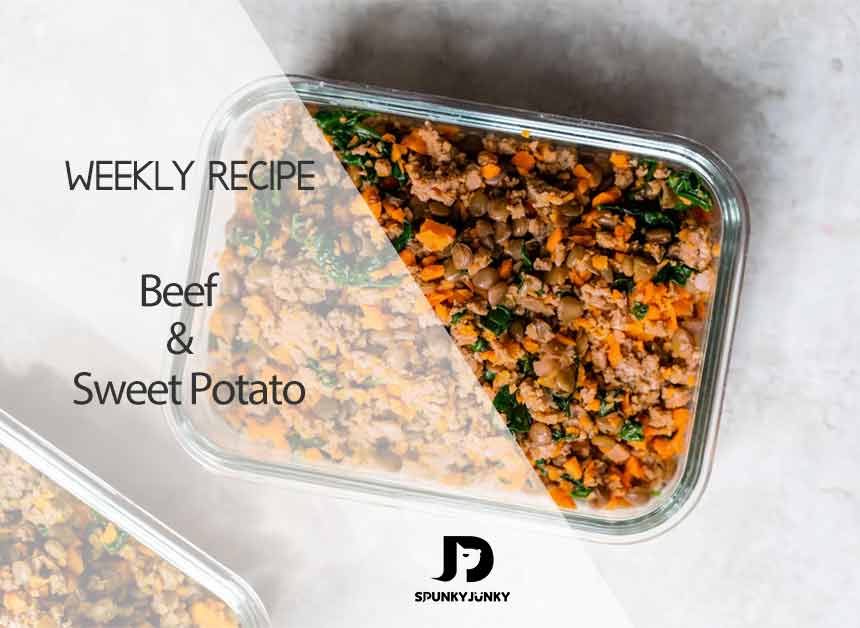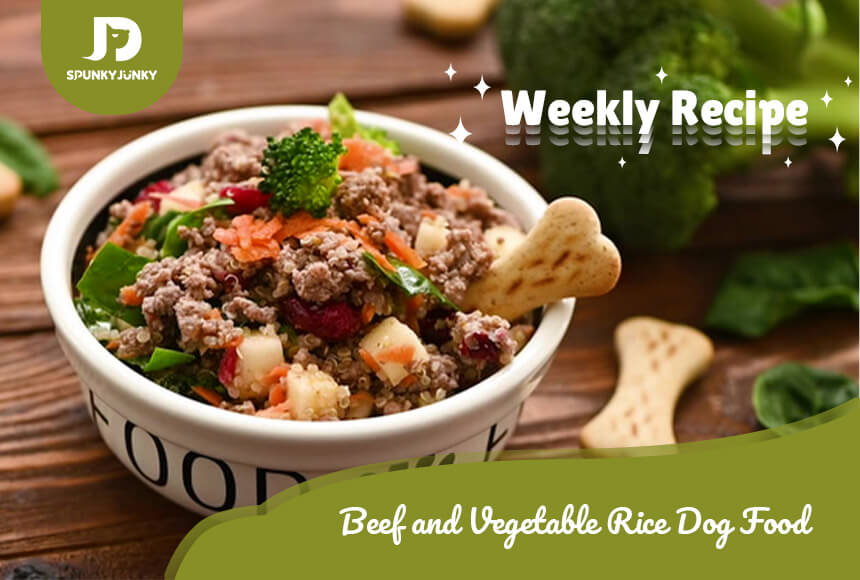Here again! Welcome back to SpunkyJunky's Weekly Recipes!
This week, we have something special for cat parents who want to feed their cats the best food possible. Our recipe for homemade cat food is full of important nutrients and easy to make.
By preparing your own cat food, you have complete control over what your cat eats, ensuring they get all the nutrients they need for optimal health. However, it is important to discuss this with your veterinarian before making any dietary changes for your cat.
So, let's dive into the ingredients and steps needed to make this tasty and healthy homemade cat food!

Ingredients
For this homemade cat food recipe, you'll need the following:
- ● 1 lb salmon, tuna, or sardines, canned or cooked (bones taken out)
- ● 1/2 cup cooked quinoa
- ● 1/2 cup pureed sweet potato
- ● 1/4 cup finely chopped green beans
- ● 1/4 cup carrots, chopped very small
- ● 1 tsp dried catnip (optional)
Fish is an excellent source of protein and essential fatty acids that your cat needs for optimal health. Quinoa is a great way to get more fiber and protein; sweet potatoes are a good source of vitamins and minerals. Green beans and carrots are also full of vitamins and minerals, so this dish is well-balanced and good for you.

Steps for Preparing Homemade Cat Food
- 1. Start by gathering everything you'll need for the meal, such as the fish, rice, vegetables, and any supplements or extras you'll be using.
- 2. Wash the veggies really well and cut them up into small pieces. If you want, you can use a food processor to chop them up finely.
- 3. Cut the fish into small pieces and remove the skin and bones.
- 4. Follow the directions on the box to cook the rice, then let it cool to room temperature.
- 5. Mix the chopped veggies, cooked rice, and fish pieces in a large bowl.
- 6. Mix in any vitamins, minerals, or other pills or additives you are using.
- 7. Blend the ingredients in a blender or food processor to make a smooth, thick sauce. If the mixture is too thick, you can thin it out by adding a little water.
- 8. Put the mixture into clean, airtight containers, making sure to leave some space at the top for the mixture to grow as it freezes.
If you're cooking the fish from scratch, be sure to remove any bones before mixing it with the other ingredients.
It's important to figure out how much your cat should eat based on how much they weigh and how active they are. Your vet will be able to help you figure this out.
Storage
Once you've made your own cat food, it's important to store it correctly so it stays fresh and safe for your cat to eat. If you don't store your cat's food properly, it could go bad, germs could grow, and this could be bad for your cat's health.
To avoid these problems, we suggest putting the cat food in containers that keep air out. This will help keep moisture and air out, which can speed up the process of food going bad. Airtight containers can also stop germs from growing, which can happen in damp places.
The cat food should also be kept in the fridge for up to 5 days or in the freezer for up to 3 months. This makes sure that the food stays fresh and retains its health benefits. Label and date the packages so you can track when the food was made and when it needs to be used or thrown away.
Lastly, you should make sure the cat food is properly thawed and heated before giving it to your cat. The food can be thawed in the fridge or in the microwave's low setting. Before serving, heat it to the right temperature. By keeping these storage rules in mind, you can ensure your cat gets the best food and stays healthy.
Allergen Information
Some cats may be allergic to or unable to eat certain kinds of fish or other foods. Fish, cheese, and wheat are some of the most common allergens in cat food. If your cat starts to itch, throw up, or have diarrhea because of a food allergy, stop giving them homemade food and talk to your vet.
If your cat is allergic to or sensitive to any of the above ingredients, you can replace them with other safe ingredients. For example, you can use chicken or beef instead of fish, and pumpkin or butternut squash instead of sweet potatoes.
To make sure your cat gets the best diet possible, you should find out if it has any allergies or sensitivities and take care of them.
We hope you liked this week's recipe for making homemade cat food with fish. By making your own cat food, you can give your pet a healthy, well-balanced meal and have complete control over what goes into it.
Don't forget to check back next Friday for the new Weekly Recipe. We'll be sharing another tasty and healthy homemade treat for your pets. Stay tuned!






